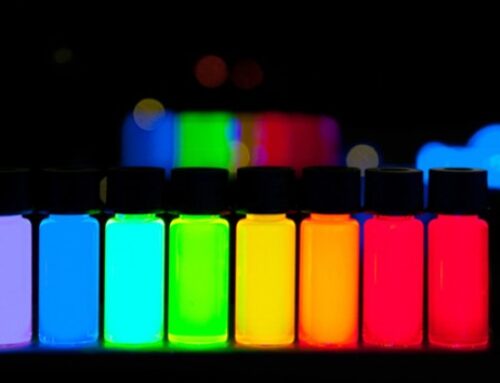By Joel Silver & Terry Paullin
HDR. Unquestionably the biggest buzz at the 2016 C.E.S. for anyone interested in things video. But before you dismiss it and file it with the other ‘’gotta-have-it’’ raves from the post-show press, let’s review a couple of past “Wolf” calls from our Industry.
Fable #1 “You just have to buy a 3D TV ….. it will be amazing” … and yes, it went down so hard and so fast it was truly amazing.
Fable #2 “4K will be amazing … you will see four, no make that eight times the resolution” …. yes, you will see something remotely like that if you sit where nobody does at 1.5 times the picture height back from the TV … AND if you have UHD content downloaded at about 100Mbps … whoops … looks like we will stream to you at about 15Mbps and try to talk you into liking it even though your lyin’ eyes say that old 2K Blu-ray is absolutely better. Down in flames, again.
Fable #3 “Stop what you are doing and run out and buy a curved TV … it’s amazingly cinematic” … indeed it is as good as a flat screen if you snag the one center seat, tell the spouse to go read a book and forbid any others into the room. It’s amazing to us that anyone would do that.
So now comes the next big thing ……….HDR (High Dynamic Range)
Folks, we double-down, pinky finger swear and testify on a stack of WSRs that THIS TIME it’s the real deal!
Implemented properly, HDR holds the potential to be the most meaningful improvement to our collective enjoyment of images on screen from disc, broadcast and even commercial theatre since color TV was introduced in 1956.
At it’s core, HDR is just that – High Dynamic Range – the breadth in luminance between absolute black and peak white. The bigger the delta, the higher the (real) contrast ratio. However, the HDR coming our way will be far more than that.
We could have limited the implementation of HDR to all the other standard picture metrics we had only a couple of years ago. We could have had plain 1080 resolution, Rec. 709 color space and 8-bit color and simply added the ability to “blast” certain pixels brighter.
Thankfully, we didn’t do that. Indeed, we took a giant step.
ISF studies of color science for over twenty years have concluded that consumer careabouts start with contrast (dynamic range), followed by breadth of color (WCG, wide color gamut), then color accuracy and finally resolution (4K for now and the UHD roadmap calls for 8K one day).
At the strong urging of leading video professionals, we took a massive step with this iteration of video technology and made several simultaneous improvements. Consequently, the current meaning of HDR is now wrapped with higher resolution, 10-bit color and wider color gamut (better color, called DCI or P3, is already in movie theatres and is clearly better).
In order to ensure you will get all this wonderfulness, a UHD Alliance was formed to set some standards for all these features and provide
a “seal of approval”, essentially guaranteeing some minimal level of performance for all the metrics wrapped up in the term “HDR”.
While there are 35 companies (and counting) in the UHD Alliance, most notable influencers include the DirecTV group INC., Dolby Laboratories, LG Electronics, Netflix, Panasonic Corporation, Samsung Electronics, Sony Corporation, Technicolor, The Walt Disney Studios, Twentieth Century Fox, Universal Pictures and Warner Bros.
An ulterior motive (actually, maybe primary) was to reduce the chance of yet another format war which would invariably cause consumers to postpone purchases.
No such luck.
There are always several ways to skin a cat. Currently several notions about how best to implement HDR are proposed or in practice. Loudest amongst purveyors is DolbyVision which is a closed standard. It launches alongside, among others, HDR-10, a SMPTE EOFT open platform adopted by the Blu-ray Disc Association (BDA) for 4K Ultra HD Blu-ray. Philips, working with Technicolor, and none other than the BBC have also proffered their own HDR variants.
Before proceeding, a couple of new terms need to be introduced to your video vocabulary.
First is “nits”. Continuing a long tradition of extraordinary effort to confuse consumers, we now talk “nits” when describing brightness where you were used to reading about foot-lamberts. A “nit” is also know as a candela-per-meter-squared and is only remotely related to the price of tea in China. Just know that there are about 3.4 of them to a foot-lambert if you want to compare them to your established references.
A more meaningful new term, “Color Volume” is one you should try to get your head around. Remember all the triangles you have seen in WSR product reviews and elsewhere that either depicted the red-green-blue color extremes of a standard (Rec. 601, Rec. 709, Adobe, DCI, etc.) or the measured result of what a product under review could actually produce? Sure you do. Now imagine a cone that has a base the shape of one of those triangles and a height equivalent to the maximum luminance that the display could produce. That product, in cubic anything, is color volume. Yup, the bigger the better.
Our new world of UHD color will shoot for the moon.
The ultra-triangle is defined in a spec. called “ITU 2020 color space”. The triangle is awesome, nearly the size of most of the colors that are visible to us homosapiens. We currently refer to it as a “container”, acknowledging the fact that it may be some time before manufacturers can hit those lofty metrics…
A related, but smaller triangle has made its way to the UHD Alliance spec. In order to get the Alliance’s “Ultra HD Premium” sticker, a display must be able to achieve 90% of a DCI (a.k.a. P3) color space.
Our old TV content was created thinking in terms of brightness at 100 Nits, which is what our old CRT reference monitors were capable of putting out. In HDR, we will create deploying monitors capable of putting out 4,000 to 10,000 Nits.
Indeed, that’s bloody dynamic!!!
A semi-new term, not usually read about is “bit-depth”. Everything we watch now is termed “8-bit”. This defines (limits) how many shades of colors we see. 8-bit ITU TV started way back in 1982 with a range of 0 – 255 and delivers a mere 220 usable shades of any possible color… HDR (10-bit) now starts with 1,024 shades. The combination of a wider color gamut and a greater bit depth is an extremely significant and easily visible color improvement.
Lastly, you may not have heard of EOTF…. it IS NOT a social disease.
It stands for Electro-Optical Transfer Function … simply the new name for gamma. But now, we have a special new gamma for HDR called SMPTE 2084 EOTF, prominent in most all of the various HDR proposals.
Can’t leave the HDR topic without stating the core specifications that really are the essence of the term. Two specs are cited to accommodate two different technologies. The LED/LCD displays need to be capable of over 1,000 Nits peak brightness and less than .05 Nits black level. For OLED displays, 540 Nits brightness and less than .0005 black level. This writer will opt for the blackest blacks. However, if your room has really bright ambient light, you may opt for the brightest whites.
Now comes the catch…..
No matter whose system(s) prevails, all displays will achieve a different level of peak luminance performance. Now add to those all of the pre-HDR 4K sets recently sold and those new sets that aren’t deemed “sticker worthy” … what fate awaits them?!
Thankfully, we now have a way to “detune” the new content to match the capability of your “lesser” display. The HDR terminology that describes this process is called “color mapping” or “tone mapping” to the display.
This is the key to our HDR present and future. The HDMI handshake will let your source know what your set’s light output and color capability is and your TV will be sent precisely what it can do. This is really new and is yet another plus in the HDR saga!
If you want a glimpse of the future, there are now eighteen DolbyVision HDR movie theatres worldwide that use amazing six laser DLP projectors and blast more light and more color than you have ever seen. You may not want to see one of those if you don’t live near one because all other theatres will forever pale by comparison.
TVs that are more dynamic than CRTs are all over the market. The term “dynamic” in this instance means better blacks and better whites. Which do you want? ….. Well, both of course! But at consumer sizes and prices you will not get the 4,000 to 10,000 Nits that content creation monitors can do. Your choices will be between OLEDs with amazing blacks and LED LCDs with really bright whites. Your room and your budget may influence your decision here, but for the first time in the history of TV, there are bona fide reasons to buy a new TV.
This time, the “Wolf” is real!





